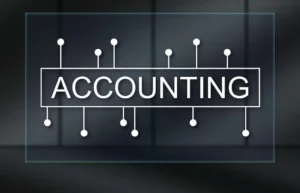When it comes to church accounting, financial statements usually look different from those of business and nonprofit organizations. However, your religious institution needs accurate, actual financial documents to pay taxes and report to sponsors correctly. The church chart of accounts (COA) is the main list of your religious institution’s operations, so it is crucial to realize what it is and how to fulfill the document correctly. Below, we will talk about this in more detail.
Understanding the Chart of Accounts
A church chart of accounts is a financial and organizational instrument that collects data on all accounts in the bookkeeping system. An account is a unique record for each kind of asset, liability, capital, income, and expenditure. Let’s find out the main moments of the chart of accounts setup:
- Financial stewardship and monitoring. An adequately structured COA allows for financial oversight and reporting of how savings are utilized, which is crucial for accountability.
- Financial reports. A correct COA also helps prepare essential documents, including the balance sheet and profit and loss statement. These reports are crucial to provide religious leaders and other interested parties with data about the church’s financial health.
- Church budgeting and planning. Such a document simplifies the creation and work with budgets since it gives a complete impression of the inflow and outflow of capital.
The COA is the basis of the accounting for churches, but it is also a dynamic document. A religious institution must update it occasionally as new tendencies arise and old ones become irrelevant. The document should be simple, understandable, and quickly edited.
Setting Up the Chart of Accounts
Let’s examine each element of the church chart of accounts. Each category has its title and number associated with it. The first digit of a specific transaction number depends on which section it belongs to, allowing you to create an organized list.
Assets
Assets are everything your church owns. Accounts in the asset section are calculated in 1000s. Let’s look at the most famous examples of assets:
- cash,
- securities,
- accounts receivable,
- inventory,
- fixed assets,
- goodwill.
Some churches have additional accounts, e.g., inter-fund accounts receivable and notes receivable.
Liabilities
These are what your nonprofit organization owes to counterparties. Their bills run into the 2000s
There are two categories of obligations:
- current responsibility,
- non-current or long-term liabilities.
Supplier invoices are current, as they must be paid within 12 months. At the same time, a mortgage is a long-term commitment.
Capital
Capital or net assets are an organization’s value, that is, assets minus liabilities. Most organizations do not use such a part of the church chart of accounts like businesses do since making a profit is not their primary goal.
Instead of this document chapter, you can create a list of funds, including general operating and mission funds. Interested parties can study fund accounting to realize where the church’s capital lies. Equity accounts and funds are recorded at 3000s.
Income
This is earned capital. Numeric codes are in 4000s. Let’s look at the main channels of profits:
- tithes and offerings,
- grants,
- holiday donations,
- interest and dividends,
- promised contributions.
The chart of accounts for churches provides significant flexibility regarding revenue structure.
Expenses
This is the money you spend. Such accounts start at 5000s, but there are also 6000s and 7000s. Let’s consider the main items of operating and non-operating expenses:
- maintenance of the church and land
- charity
- depreciation
- purchase of stationery
- staff salaries
- utilities, etc.
As we can see, the expenditures of nonprofit and for-profit organizations are largely similar. If necessary, you may add other accounts.
Managing Donations and Tithes
Understanding the management of offerings and tithes is key to the effective operation of your church. Clearly recording and continuously monitoring donations, whether in kind or cash, ensures compliance, creates an impeccable reputation, and increases donor confidence. Let’s look at financial transparency guidelines:
- Create a particular group based on the size and hierarchy of your church to handle giving.
- Establish a fair market value to deal with in-kind donations and record all capital movement.
- Ensure maximum control over restricted funds. To avoid problems, writing them down and utilizing them as the donor intended is crucial.
- Monitor all financial parameters, paying particular attention to profits, losses, and liabilities.
- Create an annual budget to provide the most accurate planning.
- Document all data handling procedures to ensure consistency and simple teaching.
A systematic approach to work improves the financial condition of your religious institution and its relationships with sponsors.
Tips and Reminders
The proper bookkeeping activity helps you get your accounting records in order. Below, we’ll describe the bookkeeping best practices.
Review financial statements every quarter
The management of a religious institution must analyze financial records quarterly. It ensures that capital flows are consistent with the church’s mission.
Financial reporting confirms that there are no discrepancies or violations. You must share these documents with all stakeholders to ensure clarity and accountability.
Ongoing financial audits reveal weaknesses and define potential areas for improvement. Realizing the church’s costs makes its future development more transparent.
Surprisingly, up to 80% of church fraud cases go undetected yearly. Therefore, management needs to study statements carefully to stop illegal activity.
Buy reliable financial software
Effective accounting software will make handling church finances as simple and efficient as possible. An accounting application can help you streamline various tasks, including donation monitoring and budgeting. It also allows the display of every transaction in the chart of accounts and monitors the religious institution’s financial performance in real-time. A record-keeping system will ensure that the church’s financial data is up-to-date.
Staff training
Having qualified staff is critical when dealing with church finances. It includes interacting with the treasurer or creating a finance group responsible for capital flows. This expert or team should be familiar with the ins and outs of church finances and have experience in the industry. It is also crucial to provide staff training on the use of the chart of accounts. With knowledgeable specialists, you may ensure that all monetary transactions happen correctly.
Final Words
Accurate transaction records are critical to transparency, accountability, and resource allocation in church financial management. The religious institution faces unusual financial challenges, including dependence on donations, special funds, and volunteer finance. It requires a careful and structured approach to accounting for nonprofits, which BooksTime can provide.
Church finances are more than just numbers and ledgers. It is a commitment to adequately allocating resources and a testament to the trust placed in a religious institution. Consulting with BooksTime experts will help you create a clear church chart of accounts that will allow your church to fulfill its mission, support communities, and navigate the complexities of financial management.


















